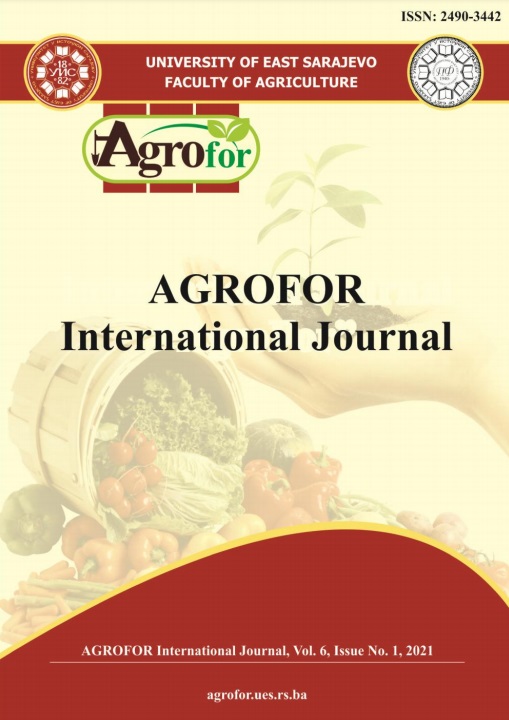PHYLOGENETIC ANALYSIS OF UKRAINIAN ISOLATE OF RASPBERRY LEAF BLOTCH VIRUS
DOI:
https://doi.org/10.7251/AGRENG2101019PAbstract
Raspberry leaf blotch virus (RLBV) is a new member of the Emaravirus genus
(Fimoviridae, Bunyavirales). Representatives of this family are characterized by a
segmented "-" RNA genome, helical nucleocapsid and enveloped spherical or
pleomorphic virions 80-120nm in diameter. Transmission of these viruses is
carried out by eriophyid mites. The virus is widely distributed in Europe. In this
paper, the phylogenetic relationships between the Ukrainian RLBV isolate and
isolates from the other countries from the GenBank database were investigated.
Samples of symptomatic raspberry plants were selected for the work. Total RNA
was isolated and RT-PCR was performed using primers to the region of the
nucleocapsid protein (P3) gene. The resulting amplicon with a length of about
500bp was sequenced. Sequences were analyzed using BLAST and MEGA7
programs. As a result of BLAST analysis, it was shown that the Ukrainian isolate
of RLBV has a high similarity to some Finnish, British, Serbian and Slovak
isolates (93-99% similarity). Nevertheless, the dendrogram constructed in MEGA7
did not distribute these isolates in a separate cluster. Interestingly, sequences of
isolates from Finland, Britain, and the Balkans were segregated into different parts
of the phylogenetic tree. This pattern can be explained by the low divergence of the
virus population or small number of isolates in the database.

